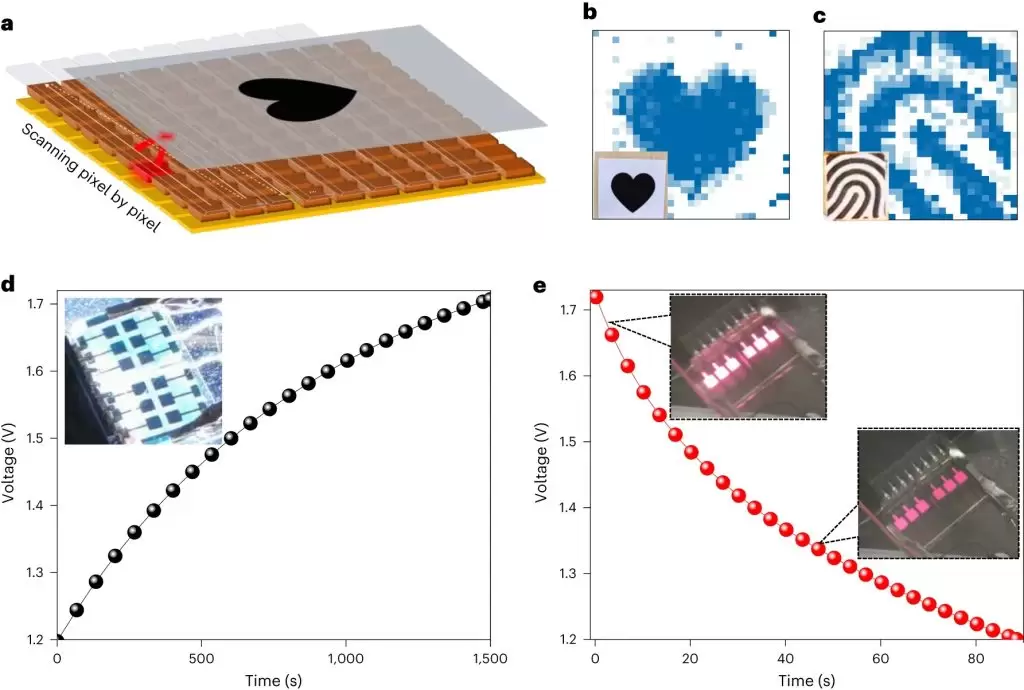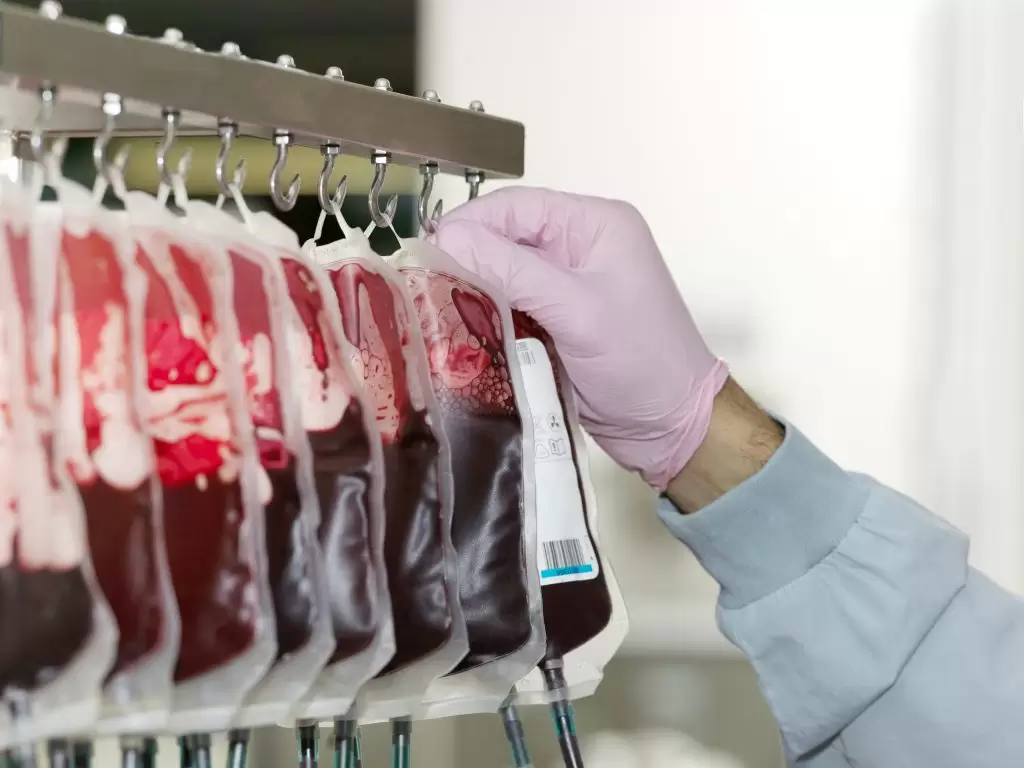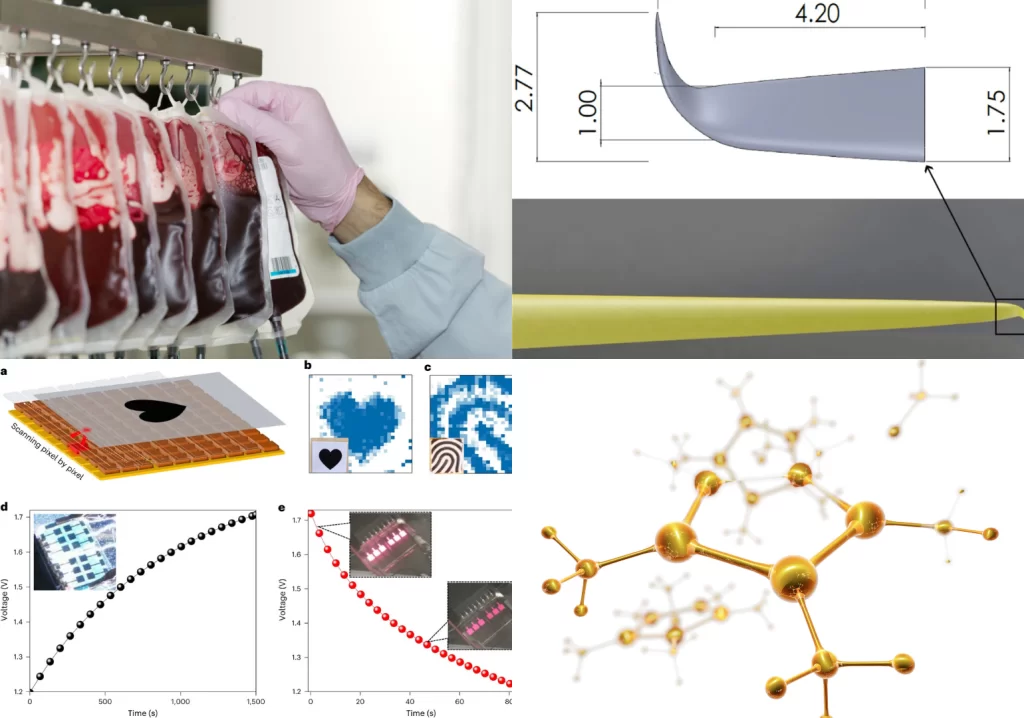From perovskite displays to 2D goldene, here are some of the latest engineering innovations from Australia and beyond.
Innovation in Australia and across the globe continues apace – here are four of the latest technology developments.
Perovskite displays
The next generation of mobile phone screens could double as solar chargers, according to new research recently published in Nature Electronics. The new perovskite-LED display uses the same crystalline structures as photovoltaic solar cells to not only absorb but generate light at a brightness many times greater than current displays.
The photosensitive PeLED also allows it to detect touch and image objects, opening the door to the new display replacing multiple sensor components in existing mobile devices.

“The perovskite LED display can be simultaneously used as a touch screen, ambient light sensor and image sensor (including for fingerprint drawing) without integrating any additional sensors,” the study’s authors said.
“The light-to-electricity conversion efficiency of the pixels also allows the display to act as a photovoltaic device that can charge the equipment.”
Universal blood type
Attempting to address the global shortage of donor blood and blood products, biotechnologists and scientists at two northern European universities – Technical University of Denmark (DTU) and Lund University, Sweden – may have found at least a partial solution.

Their work, recently published in Nature Microbiology, describes how they use enzymes produced by common gut bacteria to remove the A and B antigens from red blood cells, essentially creating neutral group O blood cells that can be administered universally.
This would reduce the need for type-matching allowing any blood donation to be given to any recipient.
“For the first time, the new enzyme cocktails not only remove the well-described A and B antigens, but also extended variants previously not recognised as problematic for transfusion safety,” said Maher Abou Hachem, co-corresponding author of the study and scientist at DTU’s Department of Biotechnology and Biomedicine.
Condor wingtip
In another example of engineering biomimicry, researchers from the Department of Mechanical Engineering at the University of Alberta in Canada have created a five-metre winglet attachment for wind turbines inspired by the aerodynamics of the Andean condor.
They found that retrofitting the winglet to an existing turbine blade increased the pressure difference between the suction surface and pressure surface along the blade’s span, increasing turbine efficiency by 10 per cent.
A prototype built by partner industrial design firm Biome Renewables confirmed that the winglet contributed to increased torque and therefore higher efficiencies than simply increasing the surface area of the blade.
“To sum up, the results of the wake study and the power production suggest that this bio-inspired design can increase the power output of the wind turbines,” said the researchers.
2D goldene
Researchers at Linköping University in Sweden have successfully synthesised the first freestanding single layer of gold atoms, named “goldene”. This ultrathin material is one-500th the thickness of gold leaf.
By exploiting gold’s plasmonic features, goldene could efficiently separate water molecules to produce hydrogen, utilising solar energy. Unlike previous 2D metals such as lead and tin, goldene exists independently, without needing to be attached to other materials.
The innovative manufacturing technique, involving layers of titanium, carbon and gold intercalation, overcomes challenges related to clumping, offering potential scalability for industrial applications.
The method, detailed in Nature Synthesis, not only advances goldene’s capabilities but also opens avenues for isolating other 2D metals, or ‘metallenes’, that could encourage innovation across multiple sectors.
